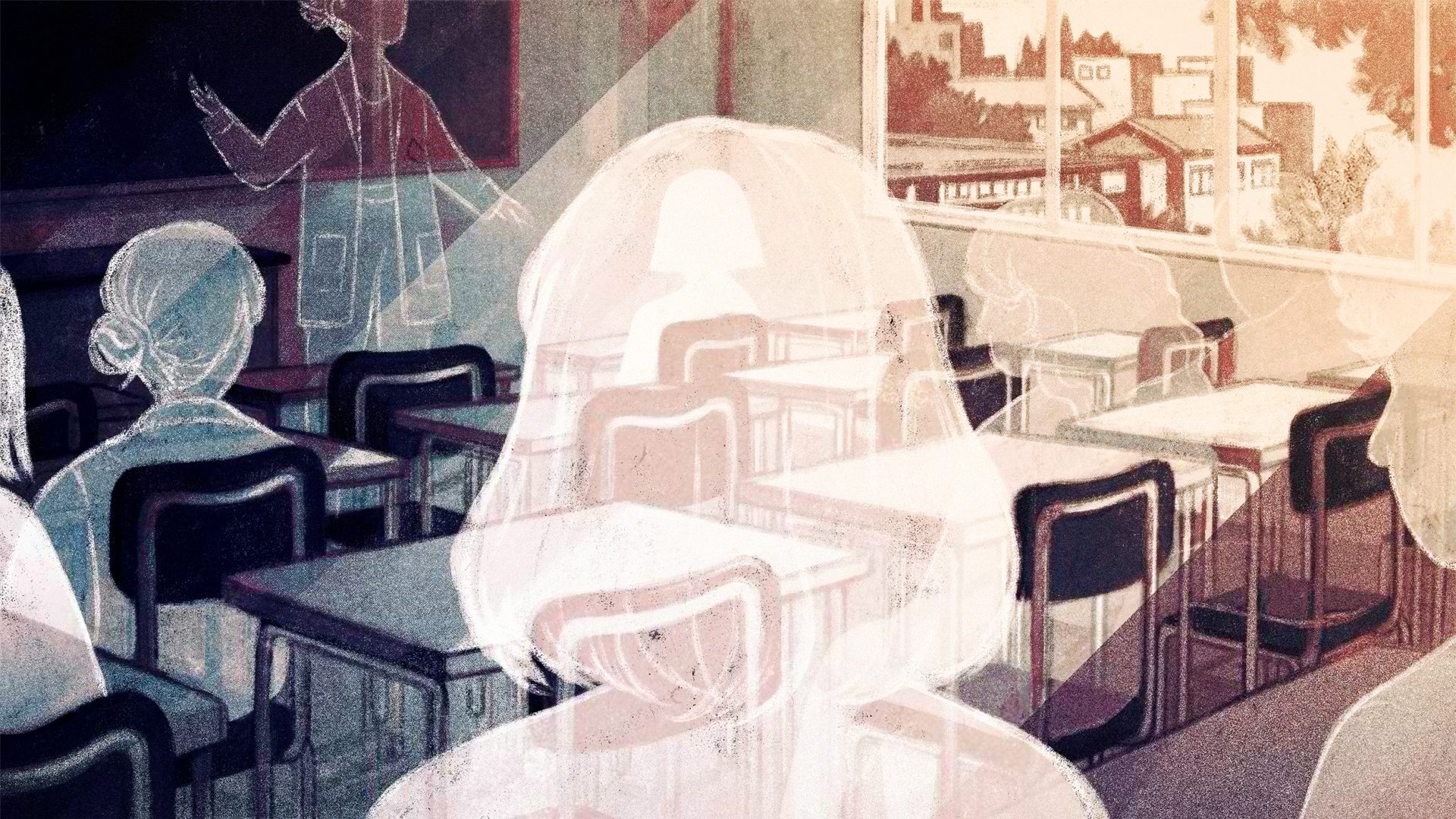
Even with teachers working hard to educate their students virtually during the pandemic, they're growing increasingly anxious about the ones who aren't showing up to class at all.
Sarah Gonzales / NPR

Even with teachers working hard to educate their students virtually during the pandemic, they're growing increasingly anxious about the ones who aren't showing up to class at all.
Sarah Gonzales / NPR

Sarah Gonzales / NPR
Even with teachers working hard to educate their students virtually during the pandemic, they're growing increasingly anxious about the ones who aren't showing up to class at all.
(Carlisle) – Dr. Colleen Friend starts most mornings around 6:15am. As the assistant superintendent for the Carlisle Area School District, it’s her job to look at the teacher absences for the day and figure out who is going to cover for who.
“It is a puzzle,” she said. “Sometimes it’s resolved in 15 or 20 minutes and other mornings, we are still rearranging people because something happens at the last minute.”
Schools in the midstate, and across the country have been dealing with staffing shortages, exacerbated by the coronavirus pandemic. Classes are often left without an instructor, when a teacher tests positive or if they have to quarantine because of a close contact.
Since the pandemic began in March 2020, the Carlisle district has relied more than ever on what administrators call, ‘building substitutes.’
They are instructors who are assigned to a specific school building long-term.
Friend said the flexibility the program provides has been invaluable over the last few months.
“Sometimes, we’ve had to ask an elementary level (instructor) to go to the middle level, or the middle level to go to the high (school) — just to try and get as many slots as we can filled,” she said.
A good day is when Friend can fill all but one teacher absence. A bad day is when she still has 12 vacancies – even after the substitutes are assigned.
On those days, the district may combine two smaller classes or administrators will step in to teach for the day.
The Susquehanna Township School District is dealing with a similar problem.
It has had days when as many at 60 percent of classes don’t have an instructor, according to Superintendent Dr. Tamara Willis.
She said the district has had to rely on technology to make sure teachers can still communicate with students, even if they are in quarantine. That way, students can still access the work and the substitute can stick to the teacher’s lesson plan.
“That is not ideal. We believe students benefit from direct instruction from a live teacher, but given the climate and the shortage, we’re doing our very best to use that technology to fill in some of those gaps,” Willis said.
Both Friend and Willis agree legislation passed last month eased their stress a bit. The new state law broadens the pool of people who can sub in by allowing retired educators or soon-to-be college graduates to help in understaff classrooms.
But, a long-term fix is still needed.
Willis said education, like so many other industries, is seeing a labor shortage.
But unlike the private sector, schools cannot raise wages or other benefits to compete.
“Especially when you see that private sector companies and non-educational employers are raising the salaries to a place that really recognizes the shortage. In teaching, we don’t necessarily have that opportunity,” Willis said.
So, she’s calling on lawmakers to raise wages and provide more incentives for public school teachers and subs to encourage more people to enter the field.

A collection of interviews, photos, and music videos, featuring local musicians who have stopped by the WITF performance studio to share a little discussion and sound. Produced by WITF’s Joe Ulrich.
The days of journalism’s one-way street of simply producing stories for the public have long been over. Now, it’s time to find better ways to interact with you and ensure we meet your high standards of what a credible media organization should be.